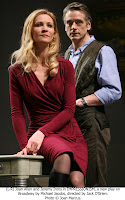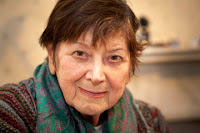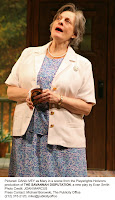
by Ptolemy Tompkins,
Guideposts magazine’s senior editor
I’m not the biggest fan of the internet. Most people spend too much time on it for their own good (including me). But I accept the position of dominance it’s attained over our daily lives. Who doesn’t have a favorite website? If you ask me, the main commodity it provides is not information or entertainment or convenience, however, but something much more elemental and mysterious: connection.
There’s a feeling I get when I hear that unearthly beep-and-static noise that our home dial-up computer makes when it’s hooking up to the internet. Suddenly I’m not alone anymore. I’m in contact with a huge, invisible grid. A larger world. The very words on my screen spell it out: “Establishing connection.”
This is not new. The need to connect to something larger is one of the oldest—perhaps the oldest—of human yearnings. And the most time-honored way of satisfying it is prayer. As Philip and Carol Zaleski point out in their new book,
Prayer: A History, there’s strong evidence that Neanderthals enjoyed a rich prayer life 50,000 years before the time of Christ. Prayer is the original internet—the way of contacting, individually and communally, a power that really and truly is larger in every way imaginable. Prayer links us to the cosmos.
But it isn’t always the easiest connection to maintain. Prayer can take work and practice. Sometimes, when I attempt to pray, I feel the way I do when I push the “start” button on my computer and the screen stays dark. I just can’t get started. I try but I can’t establish that connection.
“I have been a parish minister for twenty-five years,” writes Joel B. Jewell in his new book,
The Elements of Prayer, “and during that time the most common problem among my parishioners, the cause of their greatest consternation, has been prayer. Everybody believes in it and feels it’s necessary. But a lot of people do not think they really know how to do it.”
Philip Yancey—author of
Prayer: Does it Make Any Difference? —agrees. “Nine in ten of us pray regularly,” says Yancey, “and three out of four claim to pray every day.” But when Yancey interviewed people about the specifics of their prayer life, he often ran into answers like this. “How often do you pray? Every day. How long? Five minutes—well, maybe seven. Do you find prayer satisfying? Not really.”
In theory, says Yancey, “prayer is the essential human act, a precious point of contact with the God of the universe. But in practice it’s often fraught with frustration.” Which is in large part why all three of these new books were written. Here are some tips from Yancey, Jewell and the Zaleskis to help keep your prayer life vital.
Keep It BigWhether or not we mean to, most of us have a habit of making God smaller than he really is. “Everyone approaches God with a set of preconceptions gleaned from many sources,” says Yancey. “Church, Sunday school lessons, stray comments by believers and skeptics alike.” Such images aren’t necessarily a bad thing. After all, without mental images of some kind, it would be impossible to think about God at all. But we need to remember that the God who we clothe in these images is in truth much bigger than we can actually imagine. When we’re not shrinking God down, we’re often busy doing just the opposite, shrinking ourselves down, pretending that God is too big and too important to hear us. Who am I to bother God with my problems? we ask. God doesn’t have time to listen to me.
Wrong. When we pray, we are entering God’s time—eternity. And eternity is very different from time as we ordinarily experience it. Rather than picture God as a busy switchboard operator juggling incoming requests, we should think of him as a deeply relaxed and sympathetic listener, a power who can absorb all of our thoughts and prayers and needs. As Jewell writes: “To enter God’s time is to accept that he is always available. He’s not hiding way off in the future. God is available now.” And as Yancey puts it, “The common question, ‘How can God listen to millions of prayers at once? betrays an inability to think outside time. God’s infinite greatness, which we would expect to diminish us, actually makes possible the very closeness that we desire. A God unbound by our rules of time has, quite literally, all the time in the world for each one of us.”
Keep It Real
In the best moments of our prayers, we are both honest with God about what we want and clear in our understanding that God may or may not give it to us. “Praying won’t necessarily resolve your vexing concerns, but it will help you identify them and keep them in perspective,” says Jewell. Therefore, “the first requirement is that you be honest with yourself. By addressing your real self to another Self, the One who tells Moses his name is ‘I Am, you are finding your own place in the universe. From that point, everything else begins.”
Does this really mean that God doesn’t always answer our prayers? We should not only accept this fact, but embrace it. Prayer, says Yancey “is cooperation with God, a consent that opens the way for grace to work.” But a God who simply answered all of our prayers without question bears more resemblance to a child’s idea of Santa Claus than to the huge and unfathomable force God is.
Keep It Personal“The main purpose of prayer,” writes Yancey, “is not to make life easier, nor to gain magical powers, but to know God.” To know God not as some extra-dimensional power, but as a being whose knowledge of us is intimate past all imagining—who knows us, as the Gospels proclaim, better than we know ourselves.
But while we may believe this in theory, it’s often hard not to put on our “prayer masks” when we speak to God, as if we could somehow control how he sees us. “Prayer is the one communication where it is utterly safe to be who you really are. God expects your true self to show up,” says Jewell. But it’s not like this is always that easy to do.
There’s a good role model for us to follow. Nowhere does the personal nature of prayer shine forth more than in the New Testament. “Jesus set the pattern for prayer as a continuous mode of friendship,” writes Yancey. “The Old Testament contains many beautiful and magnificent prayers,” but those were usually led by kings or prophets. With the New Testament, however, all of that changes. “Some scholars,” Yancey tells us, “suggest that Jesus virtually invented private prayer. No one in the Old Testament directly addressed God as ‘Father, whereas Jesus did so 170 times.”
Keep It SimpleIn prayer, Jewell says, “you are revealing your depths to God and to yourself.” It is precisely for this reason that clear expression is so important. As with writing, Jewell suggests, the most effective prayer is the one that cuts right to the heart of the matter. And Yancey reminds us of Jesus words: “Your Father already knows what you need before you ask him.” So don’t cloud things up with needless dressing. Philip and Carol Zaleski quote the fourteenth-century classic
The Cloud of Unknowing, which tells us that “short prayers penetrate heaven.” The ideal prayer, according to its anonymous author, is in fact the simple exclamation “God!”
Keep At It“Prayer is practice for all life’s meaningful communication,” says Jewell. “The more you do it, the better you get at it.”
And the better you get, the better you’ll feel. “We are happiest,” write the Zaleskis, “when attention is absorbed in concentration or expanded beyond its habitual range. Not passively ‘relaxing, but rather when we are fully engaged in a task that matters to us and challenges us.” That means that what we sometimes think is relaxing really isn’t. Watching TV, for instance, can induce a scattered, superficial state of mind in which we drift from one thought to another without coming to a halt anywhere. Prayer does the opposite, taking us away from that restlessness and bringing us into contact with our deeper, better, truer selves. We focus on the essential.
And even when things don’t seem to be working at all—that is, when we can’t hear God—we can rest assured that he hears us loud and clear. The Zaleskis begin their book with a line from the nineteenth-century clergyman John Chapman that says it all: “Pray as you can; not as you can’t.”
Does all this entail work? Trial and error? Occasional confusion and disappointment? Yes. But that’s nothing in comparison to the elemental connection that prayer offers. Maybe that’s why, in our electronically connected world, the need to pray refuses to diminish no matter how many other ways we devise of connecting with ourselves and the world. (
Guideposts’s online prayer network receives more than 300,000 prayer requests a year.)
In a world full of connections that can sometimes fail, prayer is the one thing that we can always count on to be up and running.
This article originally appeared in
Guideposts magazine. Visit the recently updated guideposts.com.





















